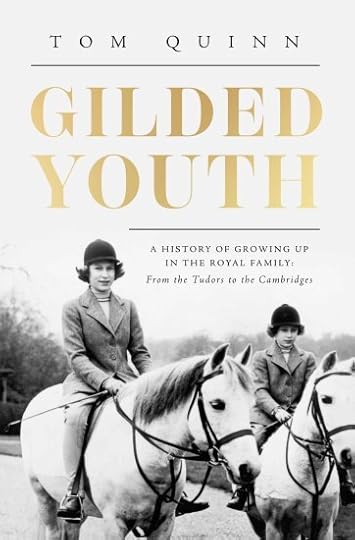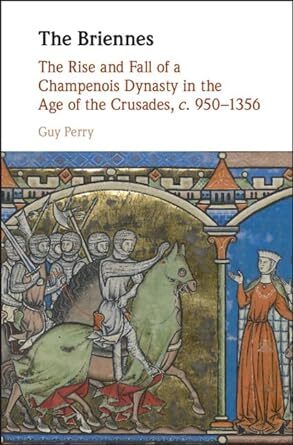Moniek Bloks's Blog, page 38
September 14, 2024
Mary of Austria – “A woman, no less” (Part one)
Mary of Austria was born on 15 September 1505 at the Coudenberg Palace in Brussels as the daughter of Queen Joanna and King Philip I of Castile. She was their third daughter and fifth child and the first to be born after Joanna’s accession as Queen regnant of Castile. Her siblings were Eleanor (later Queen of Portugal and France), Charles (later Holy Roman Emperor), Isabella (later Queen of Denmark), Ferdinand (later Holy Roman Emperor), and Catherine (later Queen of Portugal).
Ferdinand and Catherine would grow up in Castile, while the others would grow up in the Low Countries.
Mary was baptised five days later at the Notre Dame de Sablon church. Her mother had already been secluded due to her mental health problems, and after her return to Castile, she was confined at Tordesillas from 1507. Due to her mother’s absence, Mary, alongside her siblings, Eleanor, Isabella and Charles, grew up in the care of their aunt, Margaret of Austria, at her court in Mechelen. Their father died on 25 September 1506, apparently of typhoid fever.
Here, she received an excellent education, and she learned Latin, Greek, literature, history, writing, drama, French, Dutch, Spanish, German, and Italian. Mary learned to play the organ, the clavichord, and the lute, cultivating her love of music from an early age. She was also an accomplished dancer, horse rider, and hunter.
As the family patriarch, her grandfather Maximilian played a large part in her life. Even before it was clear that the child Anne of Foix-Candale, Queen of Hungary, was carrying was a boy, it was determined that Mary should marry him. Mary herself was six months old at that point. On 1 July 1506, Anne indeed gave birth to a boy – the future King Louis II. Tragically, the birth cost Anne her life. Two years later, it was also settled that one of Mary’s brothers was to wed Louis’s elder sister, also named Anne.
When Mary was eight years old, Maximilian insisted on bringing her to Vienna for the official betrothal with Louis and her further education. This worried her aunt Margaret, who insisted that Mary’s governess be allowed to accompany her. On 22 July 1515, Mary and Louis were betrothed in St. Stephen’s Cathedral in Vienna. They had met for the first time just three days earlier. It was an unusual double “wedding” as it also confirmed the betrothal of Anne and a still unspecified brother of Mary. On the occasion of the wedding, over 200 citizens were knighted. Anne and Mary remained in Vienna for now, but the death of Louis’s father, Vladislaus II, on 13 March 1516 plunged Hungary into a power struggle, and the Ottoman threat continued.
On 12 January 1519, Mary’s grandfather Maximilian also died, and she was deeply affected by his death. She wrote to her brother Ferdinand, “By the death of our good grandfather, I have lost everything.”1 Their brother Charles now became the new Holy Roman Emperor.
It was finally time for Mary to join Louis in Hungary, and she departed for Buda. It turned out to be a happy marriage, and Mary tried to support him in his struggles. On 11 December 1521, Mary was crowned and anointed as Queen of Hungary, followed by the blessing of the royal marriage on 13 January 1522. She was also crowned Queen of Bohemia on 1 June 1522. Due to her husband’s weak health, it was Mary who took charge of the affairs of government.
She and Louis began to show sympathy for the teachings of Luther, which enraged her brother Ferdinand. Mary’s take-charge attitude had earned her both supporters and enemies. In the meantime, the Ottoman threat was coming closer and closer. In July 1526, Louis went to war with the armies of Suleiman the Magnificent.
The Battle of Mohács brought their happy marriage to a sudden end. Louis died on 29 August 1526 on the battlefield after falling from his horse and becoming trapped underneath it. He was still only 20 years old. Mary learned of her husband’s death on 30 August. She fled to Bratislava and would never return to Buda. She was devastated by Louis’s death and did not know what to do.
John Zápolya was crowned King of Hungary on 11 November 1526, but his reign was disputed by Mary’s brother Ferdinand, who had married Louis’s sister Anne in 1521. In her role as regent, Mary worked tirelessly to promote Ferdinand as King of Hungary and declared John’s coronation invalid. The threat of Ferdinand’s large army meant that a large number of Hungarian nobles went to Ferdinand’s side, and he was chosen as King in a rump Diet on 17 December 1526.
The following year, Mary moved to Vienna and gave up the regency of Hungary in 1528. Despite her loneliness, she was determined not to remarry, and she refused any marriage candidate offered up by her brothers, much to their annoyance. When her aunt Margaret died on 1 December 1530, the position of Governor of the Habsburg Netherlands became vacant. Charles now wished to appoint Mary to this position.
In March 1531, Mary arrived in the Low Countries for a new start in life. She met Charles in Louvain, where he implored her not to allow the Lutheran heresy to flourish.2
As governor, Mary was given broad political leeway, and she was allowed to make many decisions on her own as long as she remained within the limits that he had set. Where the military was concerned, she had less leeway. Charles wanted to keep control over who had made treaties with or went to war with. This frustrated Mary as she was quite the strategist and often knew what needed to be done. Nevertheless, she often had to wait a long time for Charles’s official approval.
Part two coming soon.
The post Mary of Austria – “A woman, no less” (Part one) appeared first on History of Royal Women.
Catherine of Austria – The unhappy Queen of Poland
Catherine of Austria was born on 15 September 1533 in Vienna as the daughter of the future Ferdinand I, Holy Roman Emperor and Anne of Bohemia and Hungary. She was their seventh child and fifth daughter. She was baptised the following day with the papal nuncio as one of her godparents.1
The sisters were educated by Countess von Thurn, a woman “of rare intellect and solid piety.” 2 She was just nine years old when she was betrothed to Francesco III Gonzaga, Duke of Mantua and Marquess of Montferrat, who was ten years old. It wasn’t until 22 October 1549 that Catherine, accompanied by her brother Ferdinand, arrived in Mantua for the actual wedding celebrations. The marriage did not last long – just four months, the young Duke fell into a lake during a hunting trip, and he caught pneumonia. He died on 21 February 1550.
Ferdinand ordered his daughter to return to Vienna the following June. She was soon offered another suitor, but this match fell through. However, Sigismund August, King of Poland and Grand Duke of Lithuania, who had previously been married to Catherine’s elder sister, Elisabeth, had been widowed again following the death of his second wife, Barbara Radziwiłł. Although her father remembered Elisabeth’s horrible treatment in Poland, he began negotiations “for the good of Christendom and to ward off the Turks.”3
On 23 June 1553, Catherine married her sister’s widower by proxy. Łukasz Górnicki wrote, “After the banquet, there was dancing. King Ferdinand was dancing himself, and rather a lot. After dancing, they went to the bedroom. There, the King told the Voivode of Vilnius to lie down, saying: ‘The usual custom has to be observed in our House.’ And when the Voivode of Vilnius lay down as he was dressed, the King ordered his daughter to lie down beside him, but she was too embarrassed to do it. So her father caught her by the shoulders and said to his son: ‘Maximilian, help me.’ Maximilian caught her legs, and they put her next to the Voivode. Immediately afterwards, the Queen leapt out of bed, not without help, and the Voivode as well. There were other ceremonies too, but not accompanied by grand speeches as in our country.” 4
 The proxy wedding (public domain)
The proxy wedding (public domain)Catherine was no fair maiden, although the Habsburgs claimed that her first marriage had not been consummated, so this episode can be attributed to the trepidation she felt about marrying a man who notoriously neglected her sister in favour of his mistress. Her dowry was set at 100,000 Austrian florins, which was the usual amount for women from the house of Habsburg.5 Her trousseau consisted of family heirlooms, such as “four older harnesses of purple silk with letters F and R interlacing each other and gilded” 6 and “an ermine with a golden head in which there are ten rubies and new diamonds with twelve pearls, and two pear-shaped pearls hanging from its ears, and it has an enamelled chain attached with twenty-four pearls, its feet are made of enamelled gold.” 7
Catherine left for Poland on 13 July, accompanied by her brother Maximilian. Problems between husband and wife soon arose, as he wanted her to learn Polish as quickly as possible and refused to authorise the arrival of her three German-speaking ladies-in-waiting. It also became clear that, like her sister before her, Catherine likely suffered from epilepsy.8
Catherine fell pregnant in the spring of 1554. She was apparently quite unwell, and her husband wrote, “Today, Her Highness the Queen, our wife, let us know of her very bad health, and for that reason, we sent our doctor Baża to her royal Highness, but today, this very hour we have received letters from doctors of the dangerous state of her royal highness’ health, and finally from the Queen herself, in which she asks us with great urgency to come as soon as possible. So tomorrow, we will go to Her Royal Highness early in the morning, leaving all our matters behind. And having spent Sunday there, we will go to Lublin on Monday on our business.” 9 A few days later, he wrote that Catherine, “is in good health, not even anxious, and she is constantly feeling the baby in her womb.”10
However, it appears the pregnancy ended in a miscarriage not much later. Sigismund August wrote, “The Queen Her Highness, our wife, had some post hunc fluxum sanguinis [bleeding afterwards], and is not entirely well, especially since she feels the metum foetus [anxiety of the foetus], the further along Her Highness is, the more ill she feels. And because women better understand these things than anyone else, even doctors, and your lordship deigned to mention Ms Kozicka, who in hoc artis genere est bene probata [is proficient in this kind of skill], we demand that your lordship sends her without delay to Parczów so that she may see what is happening.”11
Sigismund August’s thoughts turned to securing a divorce, but there were no valid grounds for one. When Catherine fell ill in 1558, her Austrian relatives believed she had been poisoned. She survived her ordeal and remained in Poland, although she and her husband mainly lived apart. In 1566, she was allowed to travel to Austria and wrote to her husband often. These letters made him mad and only intensified his wish for a divorce. As there was no possible resolution, Catherine resolved to remain in Austria and settled in Linz. At her castle in Linz, she devoted her time to horticulture.
Catherine died in Linz on 29 February 1572 at the age of 39. She had been ill for a while, although it is unclear what kind of illness she said. She had directed her will three weeks earlier. In it, she asked her “most beloved lord and husband” that if she “ever did, acted and began anything in his will and pleasure”, he should “forgive and pardon her for the sake of God.” She also forgave him “from the bottom of her heart.” She bequeathed him all the jewellery he had ever given her. Other jewellery, clothes and accessories were to be divided among her sisters.12 Her wish to be buried at the feet of her parents’ tomb in Prague was not fulfilled, and she was buried at the Castle Chapel in Linz. She was moved to the St. Florian Monastery many years later.
Her husband followed her in death just five months later.
The post Catherine of Austria – The unhappy Queen of Poland appeared first on History of Royal Women.
September 13, 2024
The Year of Isabella I of Castile – Withdrawing from government
From 14 September 1504, Queen Isabella I of Castile officially withdrew from government affairs, and she no longer signed state papers.
She had been greatly affected by the tragedies that had befallen her family in the past few years. The deaths of John and the stillbirth of his daughter, the death of her elder daughter Isabella and the subsequent death of Isabella’s son, Miguel, had been devastating.
Her health had been declining as well, and she was no longer able to travel longer distances. She spent Easter and June 1504 in a convent at Mejorada de Olmedo but spent most of the time at Medina del Campo. She spent much time in bed, and both she and Ferdinand fell ill with a fever in July. But while Ferdinand shook it off, Isabella had barely recovered when she was hit with another fever. The first signs of dropsy were also beginning to show.
At the end of September, Ferdinand secretly wrote to his daughter Joanna, Isabella’s heir, and her husband, Philip. He wrote, “Keep secret what I am about to tell you. No living person apart from the princess and the prince should know. I have not wanted to write about the illness and indisposition of the serene Queen, my very dear and much-loved wife, before because I thought that our Lord would give her health… but given what has happened and her current state, I am very fearful… our Lord might take her.”1
On 12 October 1504, she signed her final document – her will. The end was near.
The post The Year of Isabella I of Castile – Withdrawing from government appeared first on History of Royal Women.
September 12, 2024
The Wurttemberg Ornate Pearl Tiara
The Wurttemberg Ornate Pearl Tiara is thought to be a remodelled tiara from the collection of Sophie of Wurttemberg but this has not been confirmed. Nevertheless, this is where the name originates from.
Embed from Getty ImagesIt was created for Queen Wilhelmina in 1897 and is set with diamonds, round and pear-shaped pearls. She wore the tiara for some of the first official portraits of her.
It is a versatile tiara that can be worn in four different settings.
The future Queen Beatrix chose this tiara as her wedding tiara in 1966, and she wore it to the wedding of Crown Prince Frederik of Denmark and Mary Donaldson in 2004.
Embed from Getty ImagesEmbed from Getty ImagesSince Queen Beatrix’s abdication, Queen Maxima has also worn this tiara on several occasions.1
The post The Wurttemberg Ornate Pearl Tiara appeared first on History of Royal Women.
September 10, 2024
Princess Bo Ji – The Princess who burned herself to death for righteousness
Princess Bo Ji has often been seen as a virtuous Princess. She was willing to die for righteousness rather than live an unrighteous life. Her story has inspired a chastity cult in late imperial China.[1] Thus, she has often been seen as a model Princess that women must follow.[2] She has continued to be admired and praised for thousands of years.
Princess Bo Ji was born sometime in the early sixth century B.C.E.[3] Bo means “eldest daughter.”[4] She lived during the Spring and Autumn period, which lasted from 771 to 453 B.C.E. During this period, Chinese states were declaring their own independence from the ruling Zhou Dynasty to form their own dynasties.[5] She was a Princess of the State of Lu.[6] Her father was Duke Gong of Lu. Her mother was Mu Jiang.[7] She had an older brother who would be known as Duke Cheng of Lu. She was said to be very obedient and virtuous.[8]
In 582 B.C.E., Princess Bo Ji married Duke Gong of the State of Song (which was a larger state and south of Lu).[9] When she arrived in Song, her husband did not personally greet her.[10] She refused to attend the ancestral temple to complete her marriage.[11] She finally went to the ancestral temple to complete her marriage ceremony when her mother begged her to go.[12] Duchess Bo Ji was married to Duke Gong for ten years.[13] Duke Gong died in 575 B.C.E., and Duchess Bo Ji became a widow.[14] It is unknown if she ever had children.[15]
In 583 B.C.E., the palace that Duchess Bo Ji was staying in caught on fire.[16] Duchess Bo Ji did not leave her burning palace.[17] Instead, she waited for both her governess and her matron to accompany her out of the palace.[18] These were part of “the rules of righteousness”[19], which women were required to obey.[20] Her matron arrived to accompany her, but her governess did not.[21] Thus, Duchess Bo Ji sent her matron out to let her rescue herself.[22] However, Duchess Bo Ji stayed behind in the palace and was burned alive.[23] She was in her fifties.[24]
Princess Bo Ji’s death has been seen as heroic by Confucian scholars.[25] She was a Princess who was willing to die for righteousness. In late imperial China, she was the symbol of a chastity cult.[26] Thus, Princess Bo Ji would rather die than live an unrighteous life. She is included in Biographies of Eminent Women under the category “Biographies of the Chaste and Obedient.”[27] Princess Bo Ji has been praised and admired for over two thousand years.[28]
Sources:
Cook, C. A. (2015). “Bo Ji, Wife of Duke Gong of Song”. Biographical Dictionary of Chinese Women: Antiquity Through Sui, 1600 B.C.E. – 618 C.E. (L. X. H. Lee, Ed.; A. D. Stefanowska, Ed.; S. Wiles, Ed.). NY: Routledge. pp. 7-8.
Eno, R. (2010). 1.7. Spring and Autumn China (771-453). Indiana University, PDF.
Liu, X., Kinney, A. B. (2014). Exemplary Women of Early China: The Lienü Zhuan of Liu Xiang. United Kingdom: Columbia University Press.
[1] Cook, 2015
[2] Cook, 2015
[3] Cook, 2015
[4] Liu & Kinney, 2014, p. 231
[5] Eno, 2010
[6] Cook, 2015
[7] Liu & Kinney, 2014
[8] Cook, 2015
[9] Cook, 2015
[10] Cook, 2015
[11] Cook, 2015
[12] Cook, 2015
[13] Liu & Kinney, 2014
[14] Liu & Kinney, 2014
[15] Liu & Kinney, 2014
[16] Liu & Kinney, 2014
[17] Cook, 2015
[18] Cook, 2015
[19] Cook, 2015, p. 7
[20] Cook, 2015
[21] Cook, 2015
[22] Cook, 2015
[23] Cook, 2015
[24] Cook, 2015
[25] Cook, 2015
[26] Cook, 2015
[27] Cook, 2015, p. 8
[28] Cook, 2015
The post Princess Bo Ji – The Princess who burned herself to death for righteousness appeared first on History of Royal Women.
September 8, 2024
Atossa Shahbanu – Princess, thrice a Queen, and Queen Mother of the first Persian Empire
Queen Atossa Shahbanu was the daughter of King Cyrus the Great. She was Queen to three Persian Kings: King Cambyses II, the False Smerdis, and King Darius the Great. She was also Queen Mother of King Xerxes I. Queen Atossa Shahbanu wielded immense political influence in the first Persian Empire. Thus, Queen Atossa Shahbanu played an unusual role in the Persian Empire.
All of the information regarding Queen Atossa Shahbanu comes from the Greek historian Herodotus.[1] The name Atossa is not mentioned in any Persian texts.[2] This is because women are excluded from the palace reliefs of Persepolis.[3] However, there is a general agreement among historians that Atossa Shahbanu was a real historical figure, and all the facts that Herodotus has mentioned about her are true.[4] Atossa’s Persian name may have been Udusana.[5] If that was her Persian name, then she is mentioned at least six times in the Persian texts.[6] She may also have been named Hutaosa, which means “well granting.”[7]
In circa 545 B.C.E., Queen Atossa Shahbanu was born in Persia. She was the daughter of King Cyrus the Great of the first Persian Empire. It is uncertain who her mother was.[8] It may have been Queen Cassandane Shahbanu.[9]In 530 B.C.E., King Cyrus the Great died. His son, Prince Cambyses II, succeeded him as King of the Persian Empire.
King Cambyses II wanted to follow the Egyptian culture of having a sister-wife.[10] However, this caused an outrage among the Persian nobility.[11] King Cambyses II asked the Persian judges to find a law that a man could not marry his sister.[12] The Persian judges said they could not find the law, but there was a law that a King had the freedom to do what he wanted.[13] The judges gave King Cambyses II permission to have a sister-wife.[14] King Cambyses II married his sister, Princess Atossa.[15] Princess Atossa became Queen of the Persian Empire.[16]
In 525 B.C.E., King Cambyses II launched a war against Egypt. The campaign was successful. Once he returned, King Cambyses II became suspicious of his brother, Prince Bardiya (also known as Prince Smerdis).[17] King Cambyses II secretly had him assassinated and kept the murder a secret.[18] This created trouble for him because an imposter claimed to be Prince Bardiya and launched a rebellion against him in 522 B.C.E.[19] The False Smerdis grew in popularity and offered his supporters three years of tax relief.[20] This led him to easily seize control of the provinces.[21] King Cambyses II tried to quash the rebellion but failed.[22] On his way back to the palace, he died.[23] Many historians believe he committed suicide.[24]
The False Smerdis entered the palace and became King of the Persian Empire. He took Queen Atossa Shahbanu as his Queen.[25] He also married the other wives of King Cambyses II.[26] Prince Darius and six other Persian nobles overthrew the False Smerdis.[27] Prince Darius became King of the Persian Empire. King Darius the Great married Atossa Shahbanu.[28] She became Queen of the Persian Empire for the third time.[29] His marriage to Queen Atossa Shahbanu legitimised his rule.[30] He also married Queen Atossa’s sister, Princess Artystone.[31] He also married Queen Atossa’s niece, Parmys.[32] King Darius the Great reformed the government of the Persian Empire.[33] He was known as a “lawgiver and organiser.”[34]
Queen Atossa Shahbanu may not have been King Darius the Great’s favourite wife.[35] Some historians believe that King Darius the Great’s favourite wife was Princess Artystone because she was mentioned more in the surviving Persian texts.[36] Nevertheless, Queen Atossa Shahbanu bore King Darius the Great four sons named Prince Xerxes, Prince Hystaspes (who became the leader of the Saka and Bactrian troops), Prince Masistes (who became one of King Xerxes’ generals), and Prince Achaemenes (who became the Admiral of the Egyptian fleet).[37] Queen Atossa Shahbanu was also said to be highly influential in King Darius the Great’s court.[38] In 487 B.C.E., Queen Atossa Shahbanu managed to persuade King Darius the Great to make Prince Xerxes his heir apparent.[39] King Darius the Great also made Prince Xerxes the Commander-in-Chief of the Persian Army.[40]
In 486 B.C.E., King Darius the Great died. Prince Xerxes ascended the Persian throne. Atossa Shahbanu became the Queen Mother.[41] She even persuaded King Xerxes to invade Greece.[42] In circa 479 B.C.E., Queen Atossa Shahbanu died.[43]
Queen Atossa Shahbanu played an important role in the first Persian Empire. She was a Princess, thrice a Queen, and Queen Mother. She was highly influential in making her son King Darius the Great’s successor. Queen Atossa Shahbanu is most famously known for being a central character in Aeschylus’s Greek drama, The Persians.[44] Even though she is rarely mentioned in Persian sources, it is clear that Queen Atossa Shahbanu was one of the most powerful women in the first Persian Empire.
Sources:
Llewellyn-Jones, L. (2022). Persians: The Age of the Great Kings. NY: Basic Books.
Myers, A. (2023). “Atossa”. Salem Press Biographical Encyclopedia.
Schmitt, R. (1987). “Atossa”. Encyclopaedia Iranica, Vol. III, Fasc. 1. pp. 13–14.
[1] Myers, 2023
[2] Myers, 2023
[3] Myers, 2023
[4] Myers, 2023
[5] Llewellyn-Jones, 2022
[6] Llewellyn-Jones, 2022
[7] Schmitt, 1987, p. 13
[8] Schmitt, 1987
[9] Schmitt, 1987
[10] Myers, 2023
[11] Myers, 2023
[12] Myers, 2023
[13] Myers, 2023
[14] Myers, 2023
[15] Myers, 2023
[16] Llewellyn-Jones, 2022
[17] Myers, 2023
[18] Myers, 2023
[19] Myers, 2023
[20] Myers, 2023
[21] Myers, 2023
[22] Myers, 2023
[23] Myers, 2023
[24] Myers, 2023
[25] Myers, 2023; Schmitt, 1987
[26] Myers, 2023
[27] Myers, 2023
[28] Myers, 2023
[29] Llewellyn-Jones, 2022
[30] Schmitt, 1987
[31] Myers, 2023
[32] Myers, 2023
[33] Myers, 2023
[34] Myers, 2023, para. 6
[35] Llewellyn-Jones, 2022
[36] Llewellyn-Jones, 2022
[37] Schmitt, 1987
[38] Schmitt, 1987
[39] Schmitt, 1987
[40] Schmitt, 1987
[41] Schmitt, 1987
[42] Myers, 2023
[43] Myers, 2023
[44] Myers, 2023
The post Atossa Shahbanu – Princess, thrice a Queen, and Queen Mother of the first Persian Empire appeared first on History of Royal Women.
September 7, 2024
Book News Week 37
Book News Week 37 – 9 September – 15 September 2024

Yes Ma’am: Upstairs Downstairs in the British Royal Family
Hardcover – 10 September 2024 (US)

Heroines of the Tudor Age
Hardcover – 10 September 2024 (US)

Gilded Youth: A History of Growing Up In the Royal Family: From the Plantagenets to the Cambridges
Paperback – 10 September 2024 (US)

Dancing With Diana: A Memoir by Anne Allan
Hardcover – 10 September 2024 (US & UK)

The Briennes: The Rise and Fall of a Champenois Dynasty in the Age of the Crusades, c. 950–1356
Paperback – 12 September 2024 (UK & US)

The Fall of Egypt and the Rise of Rome: A History of the Ptolemies
Hardcover – 10 September 2024 (UK & US)
The post Book News Week 37 appeared first on History of Royal Women.
September 6, 2024
Queen Glaphyra – The scandalous second Queen of King Juba II of Mauretania
Queen Glaphyra was the second Queen of King Juba II of Mauretania. He married her after his first wife, Queen Cleopatra Selene, passed away. Queen Glaphyra was also a widow. Her first husband, Prince Herod Alexander, was executed by his father, King Herod the Great. Queen Glaphyra and King Juba II of Mauretania’s marriage would prove to be unhappy and short-lived.[1]
In circa 36 B.C.E., Queen Glaphyra of Mauretania was born in Cappadocia.[2] Her father was King Archelaus of Cappadocia. Her mother was an Armenian Princess. She had a younger brother named King Archelaus of Cilicia. She may have been named after her grandmother, Glaphyra, who was most famous for her love affair with Mark Antony.[3]
In 17 B.C.E., Princess Glaphyra married Prince Herod Alexander. He was the son of King Herod the Great and Queen Mariamne I. Because Glaphyra was a Princess, she drew envy and hate from all of the women in the Herodian court.[4] It was said that Glaphyra constantly bragged about being a “king’s daughter.” [5] Prince Herod Alexander was also proud of her royal lineage and often boasted of it.[6] This made them very unpopular in King Herod’s court.[7] Their unpopularity would largely contribute to Prince Herod Alexander’s downfall.[8] Princess Glaphyra bore Prince Herod Alexander two sons named Tigranes (who would later become King of Armenia) and Alexander.[9] She also had an unnamed daughter.
In 7 B.C.E., Prince Herod Alexander and his brother, Prince Herod Aristobulus, were accused of treason.[10] They were executed by King Herod the Great.[11] King Herod the Great also imprisoned Princess Glaphyra.[12] However, he released her and sent her back to Cappadocia along with her royal dowry.[13] Princess Glaphyra left her three children in Judea.[14]
Princess Glaphyra returned to Cappadocia. She met the widowed King Juba II of Mauretania.[15] King Juba II of Mauretania was captivated by Princess Glaphyra.[16] He married her.[17] Glaphyra became Queen of Mauretania. The marriage proved to be very unhappy.[18] Queen Glaphyra divorced King Juba II of Mauretania and returned to Cappadocia.[19]
Once Queen Glaphyra of Mauretania arrived in Cappadocia, she became reacquainted with her former brother-in-law, Prince Herod Archelaus. He was the son of King Herod the Great and Queen Malthace. He was also the Ethnarch of Samaria, Judea, and Idumea.[20] They fell in love. Prince Herod Archelaus divorced his first wife, Princess Mariamne, to marry Queen Glaphyra of Mauretania.[21] Many Jews strongly urged Prince Herod Archelaus not to marry Queen Glaphyra of Mauretania.[22] This was because she had married his brother and had children with him.[23] However, Prince Herod Archelaus was deeply in love with Queen Glaphyra of Mauretania.[24] He ignored the Jewish protestations and married her.[25]
It was said that shortly after Princess Glaphyra married Prince Herod Archelaus, she had a dream about her first husband, Prince Herod Alexander.[26] Prince Herod Alexander reproached her for being unfaithful and that he would reclaim her as his wife.[27] Princess Glaphyra told her dream to her friends.[28] She died two days later in 7 C.E.[29] It is unknown if Queen Glaphyra of Mauretania ever converted to Judaism.[30] Her two sons renounced their Jewish faith.[31]
Queen Glaphyra of Mauretania was said to be “so charming and desirable” [32] that she managed to catch the eye of three powerful royals.[33] She was said to be very proud, and she attracted the hatred of the women in the Herodian court.[34] She married and divorced King Juba II of Mauretania. Yet, Queen Glaphyra of Mauretania was not criticised for divorcing her kingly husband.[35] Instead, she was criticised for marrying her former brother-in-law.[36] Josephus believed that Queen Glaphyra of Mauretania received her just desserts when she died shortly after she married Prince Herod Archelaus.[37] It is clear that Queen Glaphyra of Mauretania was a very powerful client Queen and Princess in the early Roman Empire.[38]
Sources:
Ilan, T. (31 December 1999). “Herodian Women.” Shalvi/Hyman Encyclopedia of Jewish Women. Jewish Women’s Archive. Retrieved on 26 October 2023 from https://jwa.org/encyclopedia/article/....
Lightman, M., Lightman, B. (2008). A to Z of Ancient Greek and Roman Women. NY: Facts On File, Incorporated.
Salisbury, J. E. (2001). Encyclopedia of Women in The Ancient World. London: Bloomsbury Publishing.
[1] Salisbury, 2001
[2] Salisbury, 2001
[3] Lightman and Lightman, 2008
[4] Salisbury, 2001
[5] Salisbury, 2001, p. 137
[6] Salisbury, 2001
[7] Salisbury, 2001
[8] Salisbury, 2001
[9] Lightman and Lightman, 2008; Ilan, 31 December 1999
[10] Salisbury, 2001
[11] Salisbury, 2001
[12] Salisbury, 2001
[13] Salisbury, 2001; Lightman and Lightman, 2008
[14] Salisbury, 2001
[15] Lightman and Lightman, 2008
[16] Salisbury, 2001
[17] Salisbury, 2001
[18] Salisbury, 2001
[19] Salisbury, 2001; Lightman and Lightman, 2008
[20] Salisbury, 2001; Lightman and Lightman, 2008
[21] Salisbury, 2001
[22] Salisbury, 2001
[23] Salisbury, 2002; Lightman and Lightman, 2008; Ilan, 31 December 1999
[24] Salisbury, 2001
[25] Salisbury, 2001
[26] Salisbury, 2001; Lightman and Lightman, 2008
[27] Salisbury, 2001
[28] Salisbury, 2001
[29] Salisbury, 2001; Lightman and Lightman, 2008
[30] Ilan, 31 December 1999
[31] Ilan, 31 December 1999
[32] Salisbury, 2001, p.137
[33] Salisbury, 2001
[34] Salisbury, 2001
[35] Ilan, 31 December 1999
[36] Ilan, 31 December 1999
[37] Salisbury, 2001
[38] Salisbury, 2001
The post Queen Glaphyra – The scandalous second Queen of King Juba II of Mauretania appeared first on History of Royal Women.
September 5, 2024
The Dutch Star Tiara
The Dutch Star Tiara was worn by Máxima Zorreguieta as she married the future King Willem-Alexander of the Netherlands in 2002.
Embed from Getty ImagesShe put together two separate pieces to create a new tiara. The base of the tiara came from the Pearl Button Tiara, and five diamond stars, which belonged to Queen Emma, were attached. Queen Emma had been given two sets of diamond brooches by her husband, King William III, in 1879. One set has stars with ten points, while the other set has 12 points. Máxima chose the first set for her wedding tiara.
 (Screenshot/Fair Use)
(Screenshot/Fair Use)After her wedding, she wore the tiara regularly. Recently, it was also worn by her eldest daughter, the Princess of Orange, on the occasion of a gala dinner for Princess Ingrid Alexandra of Norway’s 18th birthday.1
The post The Dutch Star Tiara appeared first on History of Royal Women.
New Māori Queen crowned
Following the death of Kiingi Tuheitia Pōtatau Te Wherowhero VII, his youngest child was chosen to succeed him as Māori Queen.
Embed from Getty ImagesTwenty-seven-year-old Ngā Wai hono i te pō was chosen by a council of the indigenous Māori chiefs. She is only the second woman to be chosen as Queen – her grandmother being the first. The role is largely ceremonial.
She was blessed with a bible that was also used to anoint the first Māori king in 1858 as she sat before her father’s coffin.
Embed from Getty ImagesHis coffin was then transported to Mount Taupiri for burial in a flotilla of canoes.
The post New Māori Queen crowned appeared first on History of Royal Women.



